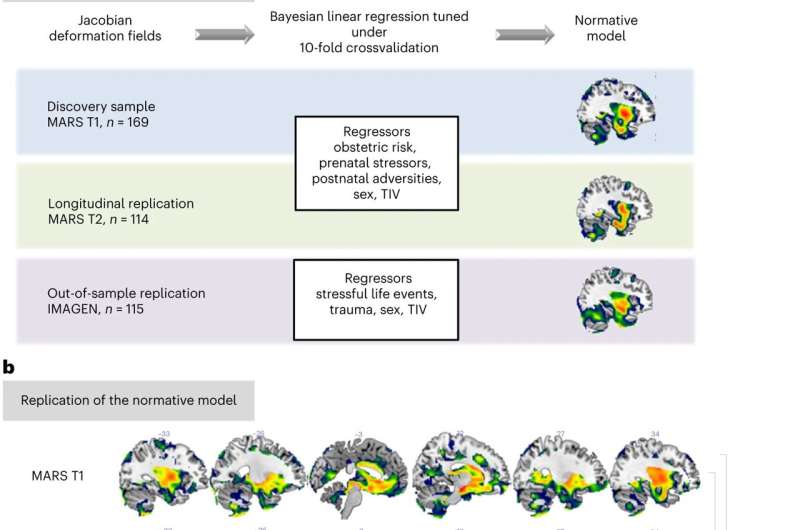This article has been reviewed according to Science X's editorial process and policies. Editors have highlighted the following attributes while ensuring the content's credibility:
fact-checked
peer-reviewed publication
trusted source
proofread
Neuroscientists show adversities permanently change our brains

Neuroscientists at Radboud University show that adversities permanently change the functioning of the brain. Furthermore, an aberrant reaction of the brain to adversities is related to anxiety symptoms. This may have predictive value for the development of psychiatric disorders.
Your brain is shaped by the things you experience. That sounds logical, but can you really measure that? And what can you do with it? Neuroscientists at Radboud University medical center investigated the influence of adversities in life on patterns in the brain. They found remarkable associations that may have predictive value for the development of psychiatric disorders.
Special group
The researchers conducted their study on approximately 170 people—a special group, because all kinds of data have been collected from them during their lifetime. For this study, the scientists specifically focused on adversities: factors or events that are known to have a negative effect on development. Consider, for example, the mother's smoking during pregnancy, complications during childbirth, abuse, or a major accident.
In addition to this data, the researchers determined the brain structure of these people with scans. They did so at both 25 and 33 years of age. Artificial intelligence was then used to find connections between adversities and patterns in the brain. "They came out very clearly," says researcher Nathalie Holz. "And these relationships are very stable. We found them at both ages. With our results, we can now predict how the brain reacts to adversities."
Anxiety complaints
"I find it very special that we can still trace the influence of events that sometimes took place 25 years ago in the brain," says research leader André Marquand. "And perhaps more importantly, it may help us predict who is more likely to develop psychiatric disorders."
Marquand explains how this works: "We have uncovered how the brain normally reacts to adversities. Therefore, we can also determine when that reaction is abnormal. And we found that such a deviating pattern was related to anxiety symptoms." These kinds of complaints play a central role in many psychiatric disorders.
The scientists expect that their findings can ultimately contribute to the earlier detection of psychiatric disorders. This allows health care providers to treat patients earlier and more effectively. But more research is needed before that becomes a reality. For example, the researchers are now applying their method to a group of patients with these disorders. This will show how great the predictive value is.
The research was published in Nature Neuroscience.
More information: Holz, N.E. et al, A stable and replicable neural signature of lifespan adversity in the adult brain, Nature Neuroscience (2023). DOI: 10.1038/s41593-023-01410-8



















